Synthesis and properties of novel N,C,N terdentate skeleton based on 1,3-di(pyridin-2-yl)benzene moiety—new tricks for old dogs
2019-12-18ShuaiTanXiugangWuYanqiongZhengYafeiWang
Shuai Tan,Xiugang Wu,Yanqiong Zheng,Yafei Wang*
a Jiangsu Engineering Laboratory of Light-Electricity-Heat Energy-Converting Materials and Applications,Jiangsu Key Laboratory of Environmentally Friendly Polymeric Materials,Jiangsu Collaboration Innovation Center of Photovoltaic Science and Engineering,School of Materials Science & Engineering,Changzhou University,Changzhou 213164,China
b College of Chemistry,Key Lab of Environment-Friendly Chemistry and Application of the Ministry of Education,Xiangtan University,Xiangtan 411105,China
c Key Laboratory of Advanced Display and System Applications of Ministry of Education,Shanghai University,Shanghai 200072,China
Keywords:
1,3-Di(pyridin-2-yl)benzene skeleton
ABSTRACT
Utilization of intermolecular Friedel-Crafts and intramolecular condensation reaction,novel 1,3-di-(pyridine-2-yl)benzene(N,C,N terdentate) skeleton with electro-withdrawing group in 6' position of pyridyl and a cyclization between 6'position of pyridyl and 6 position of benzyl ring were firstly designed and synthesized.The structures of these novel N,C,N terdentate were confirmed by NMR,MS and X-ray single crystalanalyses.The photophysical properties of these compounds were briefly explored.
With rigid conjugated structure,unique metal-carbon bond,and a molecular structurethat can be facilely modified,1,3-di(pyridin-2-yl)benzene,the so-called “pincer” ligand,has wide applications in the synthesis of inorganic and organometallic complexes [1-4].It possessesN,C,Nterdentate potentially available for coordination,whereNis a neutral donor andCrepresents an anionic aryl carbon atom.Over the past four decades,considerable amount of organometallic derivatives,such as those of platinum,iridium,palladium,ruthenium that are based on 1,3-di(pyridin-2-yl)-benzene pincer ligand have been reported as emissive materials,dye-sensitizers of solar cells,catalysts and so on [5-17].Notably,modification ofN,C,Npincer ligand has an obvious effect on the metal center,and there are strategies for the functionalization of 1,3-di(pyridin-2-yl)benzene.As shown in Fig.1,substituents including electron-rich and electron-withdrawing units,such as methyl,halogen,cyano,ester and so on,are commonly introduced to the benzylic positions (1) (i.e.,4-,5- and 6-position)[10,11,18-26].In contrast,researches on the integration of substituents into the pyridyl positions (1) (i.e.,3'-,4'- and 5'-position) are few[18,23,27,28].In addition,there are investigations on isoquinonyl replacement of pyridyl inN,C,Npincer ligand (2) [23,29-31],leading to enhancement of conjugated π system.All the methodologies can realize fine-tuning of electronic properties.However,theN,C,Nligands with electro-withdrawing group in 6'position of pyridyl and a cyclization between 6'position of pyridyl and 6 position of benzylic ring are rare,most probably due to difficulty of synthesis.
In this study,we prepared a series ofN,C,Npincer ligands bearing an electro-withdrawing group in the 6' position of pyridyl (3)viaintermolecular Friedel-Crafts(F-C),and recorded the first cyclization example ofN,C,Npincer ligand (4) through intramolecular condensation reaction.These functionalized pincer ligands provide access to a large group of interesting acceptor moiety/or organometallic complexes foroptoelectronic application.Furthermore,we chose platinum atom as metal center andsynthesized two platinum complexes using these novelN,C,Nterdentate ligands.
Initially,we used commercially available 2-bromonicotinic acid(5) as starting material to afford the cyclized pincer ligand(Scheme 1).In view of the formation of byproducts in the reaction between compound 5 and methanol,we prepared 2-bromonicotinate (6)viathe following optimized procedures: i) The intermediate of 2-bromonicotinoyl chloride was synthesized by acyl chlorination between compound 5 and oxalyl chloride; ii)Subsequent esterification reaction was carried out between the acyl chloride intermediate and methanol at room temperature for 2 h,furnishing methyl 2-bromonicotinate (6) in 72% yield.Using Pd(dppf)Cl2as catalyst,1,3-phenylene diboronic acid reacted with compound 6 to afford compound 7 in 74%yield.The key precursor(8)was generated through acidification of compound 7 in ethanol/H2O under reflux condition.The acyl chloride intermediate was prepared by reacting compound 8 with SOCl2,and was used for the next step without further purification.The most critical step,the intramolecular cyclization reaction,was conductedviaF-C reaction using chlorotoluene as solvent and AlCl3as catalyst at 135°C overnight.Surprisingly,isomer products 9-11 were obtained instead of the expected cyclization compound.In order to purify these isomers,HPLC with water/acetonitrile (v/v =30:70) eluent was carried out.The ratio of the three isomers is roughly 22:10:1 after purification.
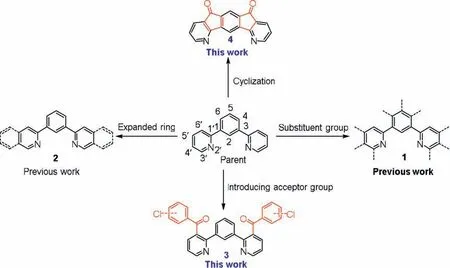
Fig.1.Potential modification sites in 1,3-di(pyridine-2-yl)benzene.
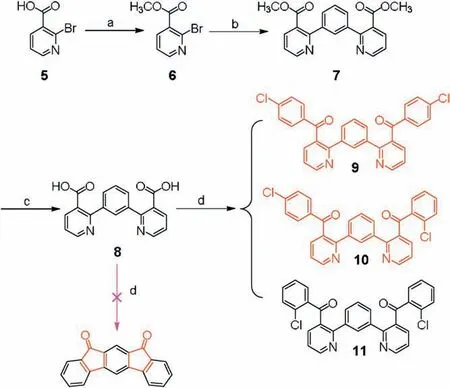
Scheme 1.Synthesis of 5- 11.Reaction conditions:(a)(i)(COCl)2,r.t.,2 h;(ii)MeOH,r.t.,2 h;(b)1,3-phenylenediboronic acid,Pd(dppf)Cl2,K2CO3,THF/H2O,85°C,24 h;(c) NaOH aq.,ethanol,80°C,overnight; (d) (i) SOCl2,70°C,24 h; (ii) AlCl3,chlorobenzene,135°C,overnight.
All new compounds were confirmed by1H NMR,13C{1H}NMR,and TOF-MS ( Supporting information).1H-1H COSY and NOESY NMR spectra were also recorded to fully elucidate the structure of compounds 9 and 10 and to unambiguously assign the resonance peaks( Supporting information).Single crystal of compound 9 was grown by slow evaporation of a methanol/CH2Cl2solution of the compound at room temperature (v/v = 1:1,Fig.2 and Supporting information).The crystal system is triclinic with P-1 space group,which shows a distorted structure for compound 9.
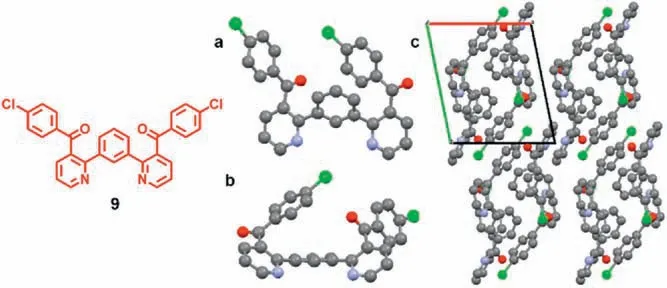
Fig.2.Crystal structure of compound 9: (a) top view; (b) side view; (c) packing diagram along the c-axis.H atoms are omitted.
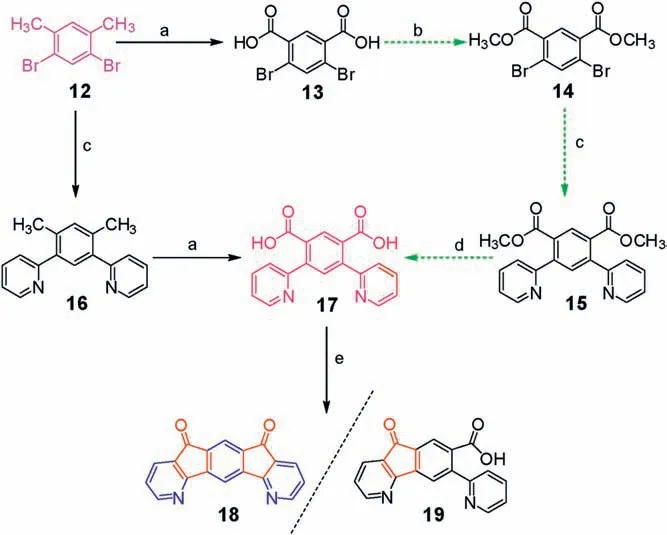
Scheme 2.Synthesis of compound 18.Reaction conditions:(a)KMnO4,BuOH,H2O;(b)(COCl)2,methanol; (c) Pd(PPh3)2Cl2,2-(tributylstannyl)pyridine,LiCl;(d)LiOH,THF,methanol,H2O; (e) LDA,DIEPA,THF.
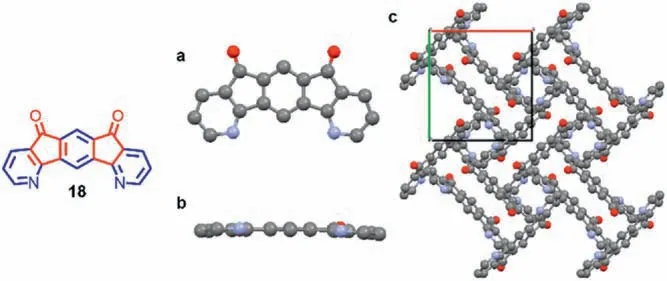
Fig.3.Crystal structure of compound 18: (a) top view; (b) side view; (c) packing diagram along the c-axis.H atoms are omitted.
To further gain insight into the cyclicN,C,Npincer ligand,1,5-dibromo-2,4-dimethylbenzene (12) was selected as a simplified starting material.Indaceno[1,2-b:7,6-b']dipyridine-5,7-dione (18)could be prepared by two synthetic routes (Scheme 2).First,the oxidation of compound 12 catalyzed by KMnO4afforded 4,6-dibromoisophthalic acid(13),which was subsequentlysubjected to esterification and Still coupling reaction using 2-(tributylstannyl)pyridine,Pd(PPh3)2Cl2and LiCl to yield compound 15.The key precursor 17 was generated in good yield through the hydrolysis of compound 15 using LiOH as base.Second,an optimized two-step route for obtaining 17 was carried out.Still coupling reaction of 12 and 2-(tributylstannyl)pyridine catalyzed by Pd(PPh3)2Cl2and LiCl yielded compound 16 which was subjected to an oxidation reaction to afford 17.Finally,the cyclizationproduct 18 was obtained from 17 using LDA andN,N-diisopropylethylamine in THF solution in 44%yield.
All new compounds in Scheme 2 were confirmed by1H NMR,13C{1H}NMR,and TOF-MS( Supporting information).Single crystal of product 18 suitable for X-ray crystallography were obtained from a methanol/CDCl3(v/v = 2:1) solution of 18.As shown in Fig.3,compound 18 exhibits a monoclinic crystal system with P21/n space group which is different from that of compound 9.Compound 18 displays a planar conjugated structure with four molecules in a unit cell while there are only two molecules in a unit cell for compound 9.Interestingly,compound 18 possesses a good ordered packing structure with intermolecular distance of 3.49 Å.
In order to check the complexation property of these pincer ligand,reactingN,C,Nligands 9,10 and 18 with K2PtCl4in acetic acid and H2O at 120°C for three days,platinum complexes 20 and 21 were obtained and characterized by1H NMR,13C{1H}NMR,TOFMS and elemental analysis (Supporting information).In contrast,the reaction of 18 with K2PtCl4failed to produce complex 22 plausibly due tothe largeNCNangle(143°,Scheme 3)of compound 18.For comparison,theNCNangle of 1,3-di(pyridin-2-yl)benzene)is 121°.
To explore the structure-property relationship of theN,C,Nligands and their corresponding platinum complexes,their photophysical properties were studiedviadensity functional theoretical (DFT) calculation using Gaussian 09 program( Supporting information),as well as by UV-vis absorption and photoluminescence analyses.Analogous electron distribution of highest occupied molecular orbital (HOMO) and lowest unoccupied molecular orbital(LUMO)was observed for compounds 9 and 10( Supporting information).The HOMOs were found to be mainly localized on the entire 1,3-di(pyridin-2-yl)benzene moiety as well as one of 4-acetylchlorobenzene units,whereas the LUMOs completely localized on one of the pyridine and 4-acetylchlorobenzene units.After cyclization,both HOMO and LUMO distributions in compound 18 are entirely localized on thesindaceno[1,2-b:7,6-b']dipyridine-5,7-dione skeleton.The electron distribution of platinum complexes 20 and 21 are significantly different from that ofN,C,Nligand,with HOMOs predominantly distribute over the 1,3-di(pyridin-2-yl)benzene moiety,platinum atom and chloro ligand,while LUMOs distribute mainly over the entireN,C,Npincer ligand.
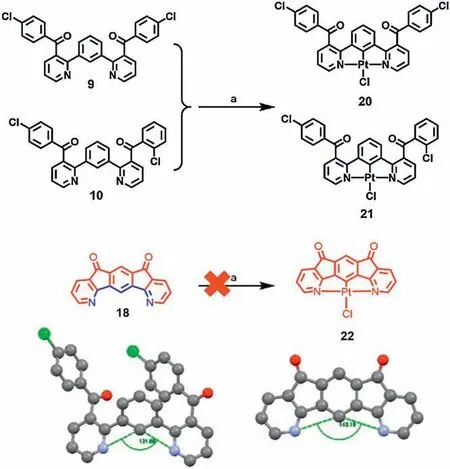
Scheme 3.Synthesis of 20-22.(a) K2PtCl4,CH3COOH,H2O,120°C,3 days.
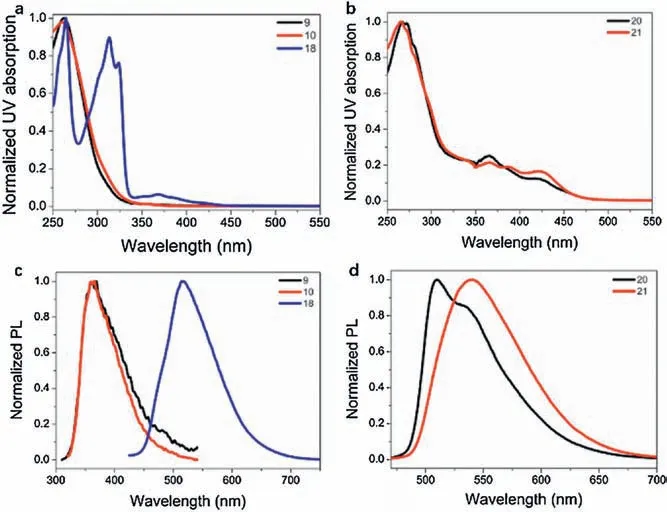
Fig.4.UV absorption (a,b) and PL spectra (c,d): (a) compounds 9,10 and 18 in CH2Cl2; (b) compounds 20 and 21 in CH2Cl2; (c) compounds 9 (λex= 310 nm),10(λex=310 nm)and 18(λex= 400 nm)in CH2Cl2;(d)λex= 450 nm,compounds 20 and 21 in CH2Cl2.
As shown in Fig.4,in solution compounds 9 and 10 show similar absorption spectra with a maximum absorption peak at 262 nm which is assignable to π-π*transition of aryl skeleton.Cyclized 18 presents a spectrum with three distinct absorption bands.The one at 264 nm is attributed toπ-π*transition.The one between 280 nm and 340 nm is ascribed ton-π*transition,whereas the one at about 368 nm to intramolecular charge-transfer transition.The absorption spectra of the platinum complexes are significantly different from that of theN,C,Nligand (Fig.4b).Beside the signal of π-π*transition at about 266 nm,there are overlapping bands of metalto-ligand and ligand-to-center charge transfer between 350 nm and 480 nm.Additionally,complex 21 presents a little red-shifted absorption bands in long-wavelength than that of complex 20.In solution,both 9 and 10 display similar emission spectra with maximum emission at 365 nm,whileclear red-shift emission(518 nm) is observed over compound 18.Similar with the absorption spectra,platinum complex 20 (510 nm and 534 nm,7.28 μs,Supporting information) also shows a red-shifted emission spectrumin solution compared to complex 21 (540 nm,8.44 μs,Supporting information).
The electrochemical properties of the new compounds (9,10,18,20 and 21) were measured by using cyclic voltammetry(CV) in CH3CN solution.All compounds only display the irreversible oxidation potential (Eox) in the range of 0.5-1.3 V (vs.Fc/Fc+,EoxFC/FC+=0.48 V,Supporting information).According to the formula ofEHOMO= -(Eox+4.8) eV,the HOMO energy levels were calculated to be-5.86 eV,-5.96 eV,-6.02 eV,-5.75 eV and-5.34 eV for compounds 9,10,18,20 and 21,respectively.Based on the optical band gap and HOMO energy levels,the LUMO energy levels are -2.07 eV for compound 9,-2.23 for compound 10,-4.73 eV for compound 18,-3.15 eV for compound 20 and-2.72 eV for compound 21.
In conclusion,novel 1,3-di(pyridin-2-yl)benzene skeleton with electro-withdrawing group at 6'position of pyridyl moiety and the cyclization derivative between 6'position of pyridyl and 6 position of benzylic ring were synthesized by means of intermolecular F-C/intramolecular condensation,respectively.Isomers 9-11 were purified successfullyviaHPLC method.All the novelN,C,Nterdentate skeletons were confirmed by1H NMR,13C{1H} NMR,MS or X-ray single crystal analysis.Further reaction of compounds 9 and 10 with potassium tetrachloroplatinate(II) resulted in the formation of platinum complexes 20 and 21 as orange dyes.The present study provides a protocol to afford novel acceptor moiety/or organometallic complexes for optoelectronic application.Further investigation on the complexation of the cyclization ligand is in progress.
Acknowledgments
Financial support was from the National Natural Science Foundation of China (Nos.51773021,51911530197,U1663229,51473140),Six talent peaks project in Jiangsu Province ( No.XCL-102),the Talent project of Jiangsu Specially-Appointed Professor,Natural Science Fund for Colleges and Universities in Jiangsu Province (No.19KJA430002),the Open Fund of Key Laboratory of Advanced Display and System Applications of Ministry of Education,Shanghai University and Natural Science Foundation of Hunan Province (No.2017JJ2245).
Appendix A.Supplementary data
Supplementarymaterialrelatedtothisarticlecanbefound,inthe online version,at doi:https://doi.org/10.1016/j.cclet.2019.08.003.
杂志排行
Chinese Chemical Letters的其它文章
- Recent advances in organic pressure-responsive luminescent materials
- Novel expanded porphyrinoids with multiple-inner-ring-fusion and/or tunable aromaticity
- The unusual physicochemical properties of azulene and azulene-based compounds
- Recent advances in photofunctional polymorphs of molecular materials
- Chiral self-assembly regulated photon upconversion based on triplet-triplet annihilation
- Luminescent Cu(I) and Ag(I) coordination polymers: Fast phosphorescence or thermally activated delayed fluorescence
